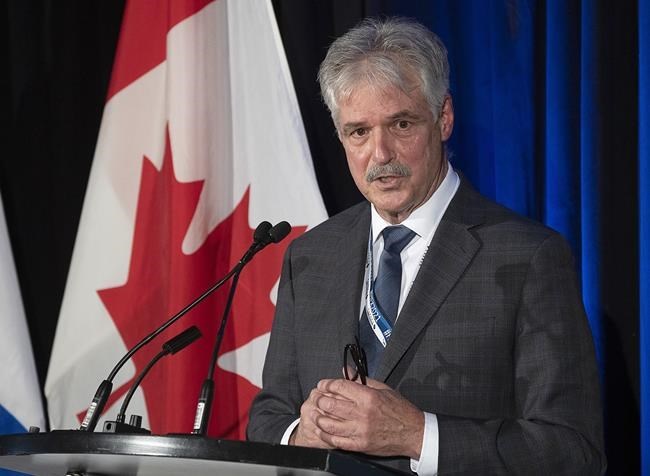HALIFAX — The man behind Canada’s first commercial spaceport says the facility in northeastern Nova Scotia could see its first suborbital test launch sometime early this summer.
Work that began last September on an access road to the launch site near Canso, N.S., is nearly complete, Maritime Launch Services CEO Steve Matier said Monday in an interview.
A small, concrete pad will then be poured to accommodate a small-scale launch to send a rocket briefly into space before it falls back to Earth, Matier said, adding that as things stand there’s no rush to set a firm date.
“We won’t put up a pin on a calendar until we are comfortable that we have everything mapped out,” he said. “We will do it when we can do it right.”
Maritime Launch Services wants to help companies send satellites into space for such things as environmental monitoring, Earth observation, imaging, and broadband and telecommunications delivery.
The company signed an agreement last year with Montreal-based Reaction Dynamics, a company that works on hybrid propulsion — a system that uses at least two propulsion sources — and is developing a suborbital launcher, Matier said.
The CEO added that aside from Reaction Dynamics, his company is also looking at rocket launches built within the academic sector.
“We are not pressuring (Reaction Dynamics) to go too fast … so we are also looking at some other alternatives within the country, some of the universities that have suborbital (launchers),” Matier said.
Meanwhile, the federal government said last week that it will develop the regulatory requirements, safety standards and licensing conditions for satellite space launches from Canada within the next three years. Transport Minister Omar Alghabra said the government would approve space launches over the interim period on a case-by-case basis.
Matier, who was in Montreal for the federal announcement, said Ottawa's plan matches his company's strategy.
“We’ve been working with them behind the scenes for a long time, but to now have them publicly come out and state their support for (a) rocket launch from Canada is really an important part of the continuing momentum that we’ve been building,” he said.
Canada has existing regulations for suborbital launches dating back to when testing and research was carried out at the former Churchill Rocket Range in Manitoba, which operated between 1957 and 1985.
Matier said his company is planning to conduct its first commercial launch in 2025, using a larger Ukrainian-made rocket, adding that he has plans to scale up to eight to 10 launches a year soon after.
He said co-operation continues with the makers of the Cyclone-4M rocket, who are based in Dnipro, Ukraine. Despite the ongoing war in that country, the first stage of the rocket — developed by Yuzhnoye SDO and manufacturer Yuzhmash — was used for an Antares rocket launch in the United States in November.
Maritime Launch Services received construction approval from the Nova Scotia government in August of last year after it met the necessary environmental assessment terms and conditions set out in 2019 by the province.
The company also signed a 20-year Crown land lease for the facility, located on 135 hectares near Canso and the communities of Dover and Hazel Hill. There is an option for a 20-year renewal based on the company’s compliance with the province’s terms and conditions.
In November 2021, the company revealed preliminary designs for a launch-control centre as well as a visitor and educational centre.
This report by The Canadian Press was first published Jan. 23, 2023.
Keith Doucette, The Canadian Press



